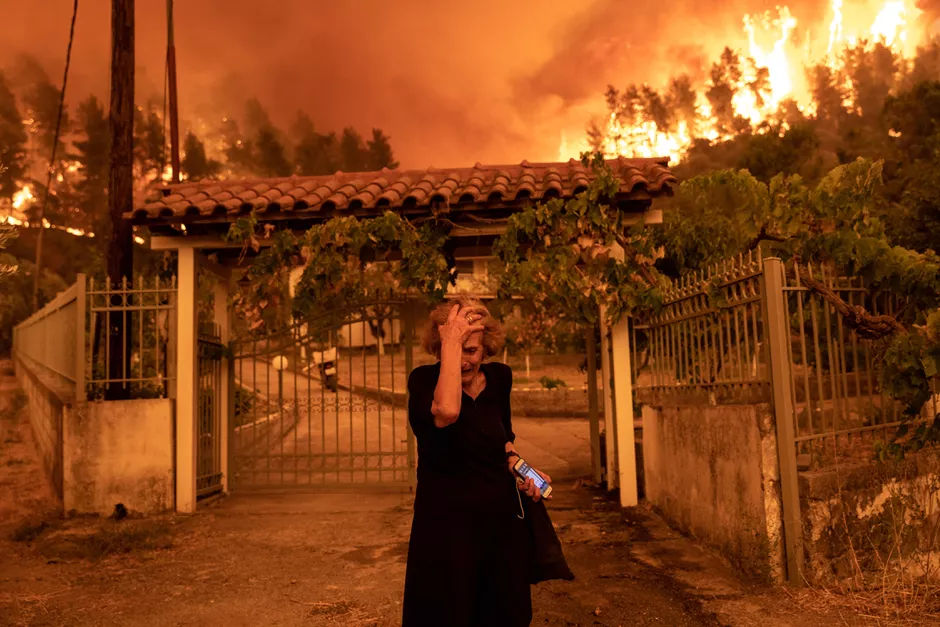“Next year you’ll meet and nothing will have changed. I don’t believe personally that we have passed the line or point of no return, but we’re approaching it, and every day you don’t do what’s right, is a day you’ve lost an option.” – Native American Chief Oren Lyons when asked about an Indian prophecy regarding climate change.
“Turn on any US television station right now and the picture unfolding before you is one of death and destruction. Homes and lives are lost but this isn’t a war zone – it’s one of the third major hurricanes to have hit the country in recent weeks with more on the horizon.”
Add out of control fires currently raging across the world, and we have more ingredients for new crises. Financial crises (what is the total cost of this destruction and who pays for it ultimately – you & me?) and health crises resulting from the toxic chemicals and other hazardous substances being released into the environment through air and waterways (once again, you & me?).
“Climate change is causing an increase in temperatures, and that increase in temperatures is causing a serious drying trend out in the west,” said Kaitlyn Weber. She is a data analyst whose group, Climate Central, released a report this week on climate change and fires. Climate scientist Michael Wehner said such increases in fire risk have not been limited to the western United States, with countries such as Greece, Turkey, Spain and France now seeing consecutive damaging fire seasons.

Photo by Ella Ivanescu on Unsplash
In The Air You Breathe
A perfect example of this dangerous situation is a fertilizer plant battered by Hurricane Ida in the US, which released highly toxic anhydrous ammonia into the air.
Which can cause severe health problems including respiratory damage and blindness. On top of that, two damaged gas pipelines leaking highly dangerous, hazardous substances isobutene and propylene, and you begin to see a growing pattern of danger to human health and life.
Research shows at least 138 industrial sites handling such hazardous substances in and around areas that completely lost power during these hurricanes forced facilities to rely on backup power generators, which in many instances were either not in working order or completely knocked out by these incidents.
Where Is The Protection?
According to Yudith Nieto, a community organizer in Louisiana and Texas, “As residents return to home facilities and the chemical runoff for emissions and pollution will be a big concern.”

Photo by Matt Palmer on Unsplash
Whilst environmental groups and unions representing plant workers and emergency responders have once again called for an overhaul of safety rules to protect the public from chemical leaks and accidents, very little has changed.
Making A Change
Whilst the Obama administration made strides in this area, President Trump took the opposite direction, weakening regulations. President Biden is now ‘reviewing the rules’…
“The United Nations Framework Convention on Climate Change (UNFCCC) recent interim report stated that ‘governments have nowhere close to the level of ambition needed to limit climate change to 1.5 degrees and meet the goals of the Paris Agreement.’
They go on to say that the ‘major emitters must step up with much more ambitious emissions reduction targets for 2030 in their Nationally Determined Contributions well before the November (2021) UN Climate Conference’. But will this really change anything and is it not too late to make a real difference?
The minute chemical substances don’t biodegrade in these circumstances, they remain active. Whatever these substances touch will become hazardous for humans and the surrounding environment. For instance, if a factory that manufactures pesticides where 200g of the product would normally be diluted in 300 liters of water to cover around 10,000 square meters or more, this same amount of product suddenly finds itself diluted in just 10 liters of water, a concentration which would take years to biodegrade.
The responsibility to prevent this falls squarely on the shoulders of the owner of such a factory or warehouse. This is where hundreds of tons of lethal materials are stored. Once released into the environment, these toxic materials would take an area of years to recover from. The worst part: who is there to police these situations?
Bottom line
Even though we have grand words from the UNFCCC with their regular COP conferences showing short- and long-term plans, nothing seems to change. There just doesn’t seem to be a real will behind these words. The headlines that generally come out of these meetings are more about which countries haven’t paid their bills than what will change. The real situation has nothing to do with money but everything to do with the will to change.
About Biodx
Biodx is on a journey to reduce society’s dependence on synthetic chemicals. Harnessing the power of biotechnology, we’re breaking boundaries, crossing new frontiers, and helping to evolve the future of disinfection.



![women [longevity live]](https://longevitylive.com/wp-content/uploads/2020/01/photo-of-women-walking-down-the-street-1116984-100x100.jpg)










